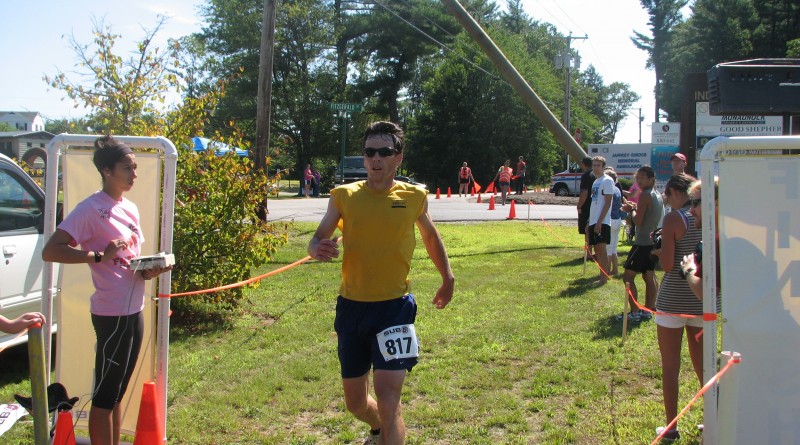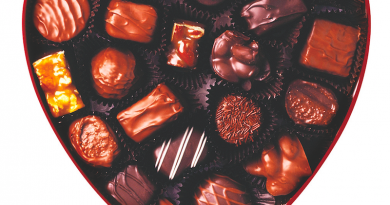Eat to Compete – Endurance Athletes Share Their Secrets to Fueling to Go the Distance
By Kristin Fletcher
The high school cross-country runners David Herr coaches can get away with pre-race fueling on hot dogs and tacos. Herr tries to keep them from doing weird things like that, he said, but their youthful stomachs tend not to rebel too strongly during their 5K races.
“They have to be reminded to drink water and eat lunch,” he said.
Herr has to give his fueling much more thought. A 2:40 marathoner and the course record holder at the Mount Pisgah 50K trail race (3:40.11), Herr said even he does not have it all figured out.
“Every race can be different,” he said. “I can still blow up.”
There are general nutritional rules endurance athletes follow to perform their best over the long haul. Hydration is crucial. Muscles need enough glycogen—glucose the body stores for later use—to continue to work. Athletes experiment on long training rides or runs to figure out what they need and when, and then make the necessary adjustments on race day based on the weather and how they feel.
Donna Smyth of Vernon knows the advice well enough to teach it. She has given lectures on the subject to master level cross-country skiers and teaches in the physical education program at Keene State College. Through her work and her colleagues at Keene, the 10-time veteran of the Pisgah 50K has devised her own system for managing her nutrition.
For Smyth, real food does not work. What does? Hammer gel (a brand of concentrated carbohydrates) 15 minutes prior to an event, then fueling with it and the energy drink Accelerade during events, along with water at the aid stations.
Her individual choices stand in contrast to those even within her own family. Smyth’s husband, Fred Ross, who started the Pisgah Mountain Trail Race in 1985 and runs it every year, prefers GU and Gatorade, and her daughter, Morgan Smyth, fueled herself on Powerade and flat Coke during her cross-country skiing career.
“All runners have to find out what liquid and what kind of food [they] can tolerate in large amounts,” Donna Smyth said. “The American College of Sports Medicine recommends two hours prior (to an event) drinking 16 ounces, 20 minutes prior drinking 8‒12 ounces, and during drinking 13‒23 ounces per hour depending on body size, heat and humidity.”
Smyth has also found taking S! Caps, an electrolyte supplement, help her avoid muscle cramps.
That kind of precise knowledge is hard won. It comes after much trial-and-error, in which punishment for mistakes is severe intestinal or mental distress or a combination of both.
“Many athletes experience digestive distress in long endurance events,” said Kimberly Evans, co-owner of Whole Health Nutrition in Williston. “When blood is flowing to working muscles the digestive system shuts down and anything in the GI tract looks for a way out … and fast! By focusing on keeping food simple and easy to digest in the day and meal leading up to an event this discomfort can be prevented.
“Many of our athletes use ginger chews or crystallized ginger before or during an event,” she continued. “Ginger is great for easing digestive distress.”
Building up the miles during training for endurance events also helps the body use its fuel—both carbohydrates and fat—more efficiently.
“Burning fat for fuel is a goal,” Evans said. “The issue is that when the body runs out of glycogen (AKA carbs) it also stops burning fat for fuel.”
When glycogen levels dip dangerously low, the body must rely primarily on fat, and that is when athletes bonk, hit the wall, blow up, as Herr put it. The legs become heavy and weak, and muscle coordination declines. The mental side effects—the brain relies on glycogen to function—include loss of motivation, confusion, and even hallucinations. Pushing past that point can be fatal.
“I’ve had races where I had to drop out or should’ve dropped out,” Herr said. “The big thing is to fuel early; don’t wait until it’s too late. Often times it gets to a point where you don’t want to take anything.”
Many marathons, century rides, and ultras provide food at water stops, and Herr will have a sandwich or salty soup over the course of a 50-mile race. He said he has a hard time digesting the gels, so limits his intake of those.
Like Smyth, he has trained himself to carry a handheld water bottle for his trail runs, but goes without during a road marathon, grabbing water or a sports drink as he flies through aid stations.
“It basically goes all over me,” he said. “On trail races and stuff, often times I’ll stop. It’s a little different atmosphere.”
For all their fueling differences, Herr and Smyth like to start the day of a big race with similar breakfasts: peanut butter on a bagel.
Add fruit and yogurt for Herr, a cup and a half of coffee for Smyth. Whatever works.



